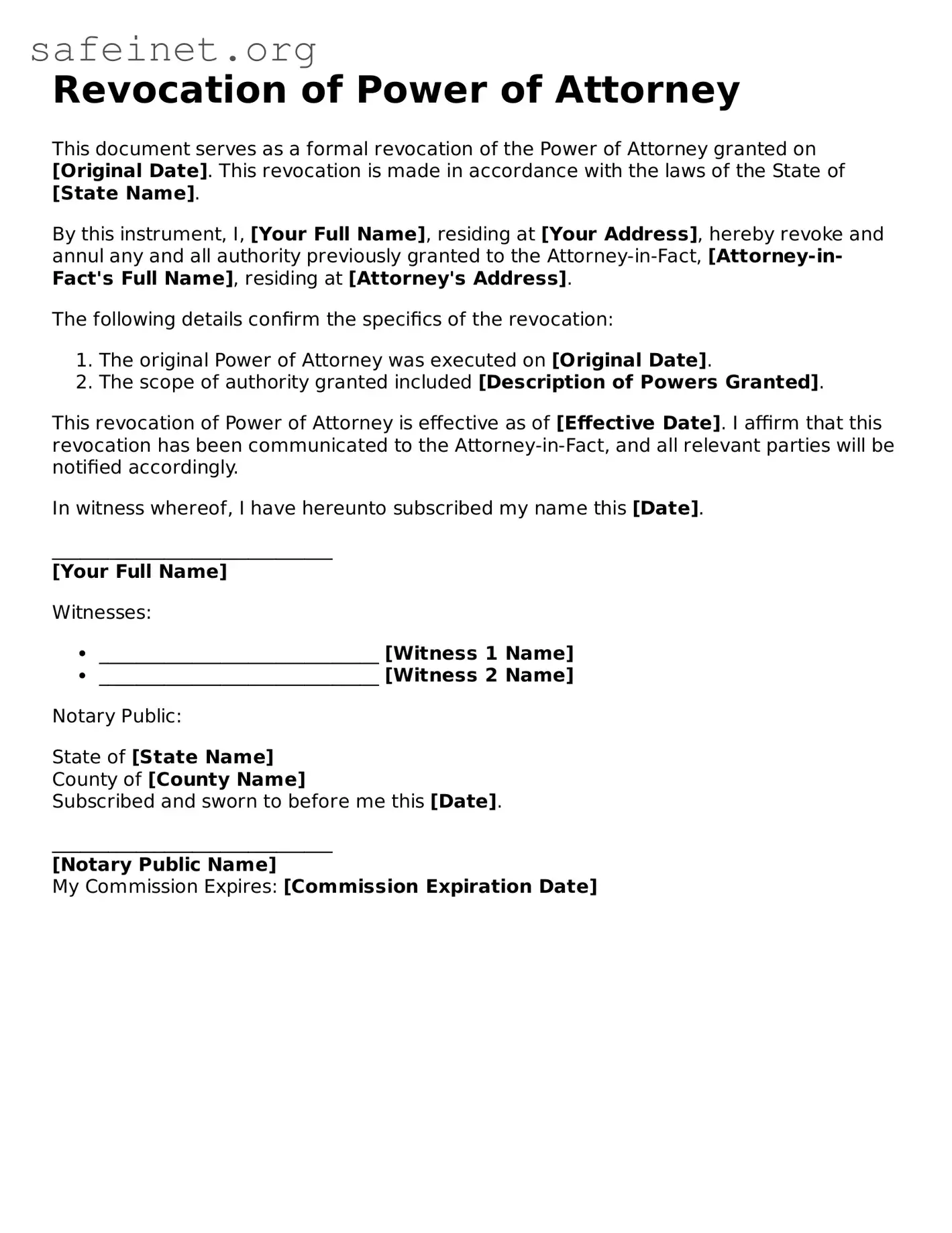What is a Revocation of Power of Attorney form?
A Revocation of Power of Attorney form is a legal document used to cancel or revoke a power of attorney (POA) that you previously granted to someone else. This form officially informs everyone involved that the authority given to the designated agent is no longer valid.
Why would I need to revoke a Power of Attorney?
There are several reasons to revoke a POA. You might no longer trust your agent, you may need to appoint a new agent, or the circumstances that originally led you to create the POA may have changed. Revoking an outdated or unwanted POA ensures your wishes are respected.
How do I complete the Revocation of Power of Attorney form?
To complete the form, clearly state your name and address, the name of the agent whose authority you are revoking, and the date you originally executed the POA. Be sure to sign and date the document. It's advisable to have a witness or notary public sign it, depending on your state’s requirements.
Do I need to notify my agent when I revoke their power?
Yes, it is a good practice to inform your agent that their authority has been revoked. This helps avoid any confusion and ensures they understand their responsibilities have come to an end. Notification can be done in writing or verbally, but written notice is preferred for record-keeping.
What should I do with the original Power of Attorney document?
After revoking a POA, it’s wise to destroy the original document to prevent any future misuse. Keep a copy of the Revocation of Power of Attorney for your records in case any questions arise about the change.
Is there a specific way to deliver the Revocation of Power of Attorney form?
You should deliver the Revocation form to your agent, financial institutions, and any third parties who were relying on the original POA. This can be done by hand, by mail, or via email, depending on the situation. Always keep copies of what you send for your records.
Will my Revocation of Power of Attorney be valid immediately?
Generally, your revocation is effective as soon as it is completed and communicated to the appropriate parties. It's wise to follow up with those notified to ensure they have received and acknowledged the revocation.
Can I revoke a Power of Attorney if the agent is unavailable?
Yes, you can revoke a power of attorney regardless of whether the agent is available or not. Your ability to revoke the document is based on your decision, not on your agent's actions or presence.
Do I need a lawyer to revoke a Power of Attorney?
No, you do not need a lawyer to revoke a Power of Attorney. As long as you follow the proper process and complete the Revocation form correctly, you can handle it yourself. However, seeking legal advice may be wise if your situation is complex.
What if I change my mind after revoking the Power of Attorney?
If you decide you want to reinstate someone as your agent, you will need to create a new Power of Attorney document. The previous revocation will still stand until a new document is properly executed.
